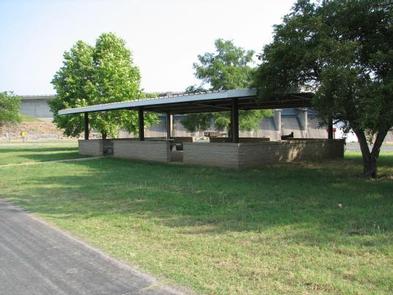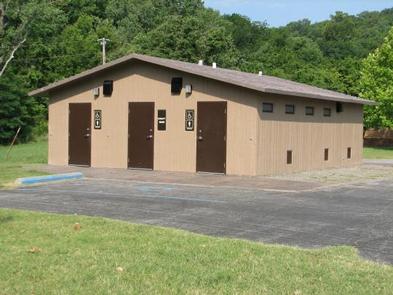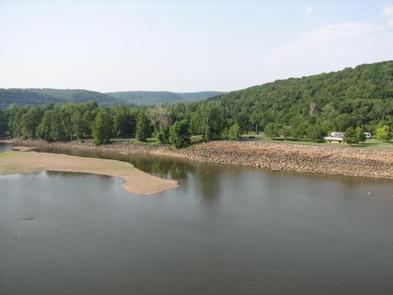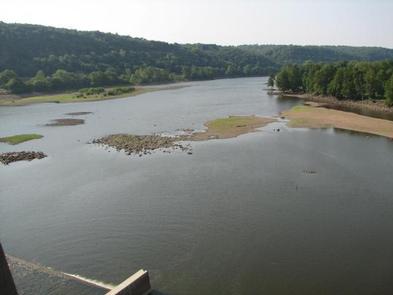Directions
From Fort Gibson, Oklahoma, take Highway 62 and exit onto Lee Street north. Turn right onto Hickory Street and continue for 3 blocks, then turn left onto State Highway 80A/Garrison Street. The road will follow the Grand River to the Fort Gibson Dam. Go west over the dam, then turn left at the end of the dam. The park will be at the bottom of the hill.
Phone
918-682-4314
Activities
BOATING, CAMPING, FISHING, HUNTING
Keywords
DAMI,FORT GIBSON LAKE,DAM SITE Fort Gibson Lake,FORT GIBSON LAKE
Related Link(s)
Oklahoma State Road Conditions
Overview
Dam Site Campground is situated below Fort Gibson Dam on the west bank of the Grand River in northeastern Oklahoma. The campground was severely damaged during recent flooding. None of the campsites offer water or electric. Water is available in the park, but it is for filling holding tanks/containers only.
Visitors love the campground for its excellent river access and fantastic fishing opportunities.
Recreation
The nearly 20,000-acre lake offers great boating and swimming opportunities.
Anglers enjoy fishing for black bass, white bass, crappie and several varieties of catfish and panfish.
The lake’s 225 miles of shoreline are home to thousands of acres of public hunting lands, where white-tailed deer, bobwhite quail, mourning dove, duck, geese, cottontail rabbit and squirrel roam.
Facilities
This seasonal campground offers 23 primitive campsites. Large family groups can take advange of the group day use shelter within the park, as well as, one located at the Overlook. Amenities include flush toilets, showers, a dump station and boat ramp.
Natural Features
Fort Gibson Lake sits nearly 8 miles from the confluence of the Grand and Arkansas Rivers. An oak-hickory woodland covers the rolling hills of the region.
A wide variety of waterfowl migrates through the area annually, providing plenty of opportunities for bird watchers.
Nearby Attractions
Historic Fort Gibson, established in 1824, served as an important military post on the western frontier for close to 70 years. Now a National Historical Landmark, the site is open to the public year round.
Volunteers reenact the lifestyle of the late 1800s during various events held throughout the year. A reconstructed log stockade, and original barracks, hospital, bakehouse and other structures still stand today.




